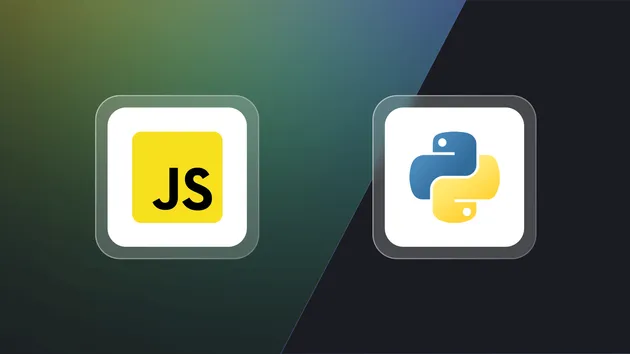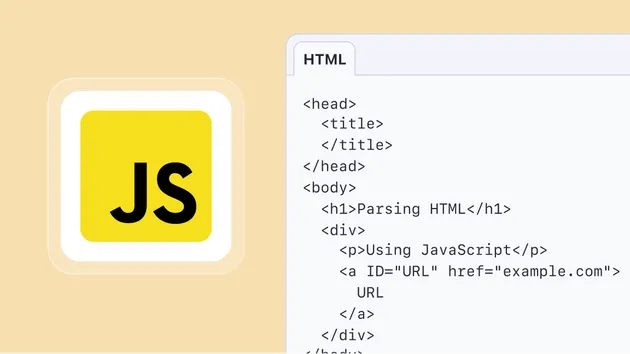Vanilla JS Scraper
Pricing
Pay per usage
Vanilla JS Scraper
Scrape the web using familiar JavaScript methods! Crawls websites using raw HTTP requests, parses the HTML with the JSDOM package, and extracts data from the pages using Node.js code. Supports both recursive crawling and lists of URLs. This actor is a non jQuery alternative to CheerioScraper.
Pricing
Pay per usage
Rating
0.0
(0)
Developer

Matthias Stephens
Actor stats
5
Bookmarked
503
Total users
8
Monthly active users
12 days
Issues response
2 years ago
Last modified
Categories
Share
Vanilla JS Scraper is a ready-made solution for crawling websites using plain HTTP requests with support for familiar JavaScript syntax. It runs on top of Apify CheerioCrawler and utilizes the JSDOM package to retrieve the HTML pages, parse them, and extract any data from them. Fast.
Vanilla JS Scraper is ideal for scraping web pages that do not rely on client-side JavaScript to serve their content, and can be up to 20 times faster than using a full-browser solution such as Puppeteer.
If you're unfamiliar with web scraping or web development in general, you might prefer to start with the Web scraping tutorial from the Apify documentation.
Table of Contents
- Usage
- Content types
- Limitations
- Input configuration
- Proxy configuration
- Results
- Additional resources
- Upgrading
Usage
To get started with Vanilla JS Scraper, you only need two things. First, tell the scraper which web pages it should load. Second, tell it how to extract data from each page.
The scraper starts by loading the pages specified in the Start URLs field. You can make the scraper follow page links on the fly by setting a Link selector and/or Pseudo URLs to tell the scraper which links it should add to the crawling queue. This is useful for the recursive crawling of entire websites, e.g. to find all products in an online store.
To tell the scraper how to extract data from web pages, you need to provide a Page function. This is JavaScript code that is executed for every web page loaded. Since the scraper does not use the full web browser, writing the Page function is equivalent to writing server-side Node.js code.
In summary, Vanilla JS Scraper works as follows:
- Adds each Start URL to the crawling queue.
- Fetches the first URL from the queue and constructs a DOM from the fetched HTML string.
- Executes the Page function on the loaded page and saves its results.
- Optionally, finds all links from the page using the Link selector. If a link matches any of the Pseudo URLs and has not yet been visited, adds it to the queue.
- If there are more items in the queue, repeats step 2, otherwise finishes.
Content Types
By default, Vanilla JS Scraper only processes web pages with the text/html and application/xhtml+xml MIME content types (as reported by the Content-Type HTTP header),
and skips pages with other content types. If you want the crawler to process other content types, use the Additional MIME types (additionalMimeTypes) input option.
Note that while the default Accept HTTP header will allow any content type to be received, HTML and XML are preferred over JSON and other types. Thus, if you're allowing additional MIME types and you're still receiving invalid responses, be sure to override the Accept HTTP header setting in the requests from the scraper, either in Start URLs, Pseudo URLs or in the Pre-Navigation Hooks.
The web pages with various content types are parsed differently and thus the context parameter of the Page function will have different values:
| Content types | context.body | context.document | context.json |
|---|---|---|---|
text/html, application/xhtml+xml or application/xml | String | Object | null |
application/json | String | Object | Object |
| Other | Buffer | Object | null |
Limitations
The actor does not employ a full-featured web browser such as Chromium or Firefox, so it will not be sufficient for web pages that render their content dynamically using client-side JavaScript. To scrape such sites, you might prefer to use Web Scraper (apify/web-scraper), which loads pages in a full browser and renders dynamic content.
Since Vanilla JS Scraper's Page function is executed in the context of the server, it only supports server-side code running in Node.js. If you need to combine client-side and server-side libraries in Chromium using the Puppeteer library, you might prefer to use PuppeteerScraper (apify/puppeteer-scraper). For even more flexibility and control, you might develop a new actor from scratch in Node.js using the Apify SDK.
In the Page function, Pre-Navigation Hooks, and Post-Navigation Hooks, you can only use NPM modules that are already installed in this actor. If you require other modules for your scraping, you'll need to develop a completely new actor. You can use the CheerioCrawler class from Apify SDK to get most of the functionality of Vanilla JS Scraper out of the box.
Input configuration
As input, the Vanilla JS Scraper actor accepts a number of configurations. These can be entered either manually in the user interface in Apify Console, or programmatically in a JSON object using the Apify API. For a complete list of input fields and their types, please visit the Input tab.
Start URLs
The Start URLs (startUrls) field represents the initial list of pages that the scraper will visit. You can either enter the URLs manually one by one, upload them in a CSV file, or link URLs from a Google Sheet document.Each URL must start with either a http:// or https:// protocol prefix.
The scraper supports adding new URLs to scrape on the fly, either using the Link selector and Pseudo-URLs options or by calling context.enqueueRequest() inside the Page function.
Optionally, each URL can be associated with custom user data - a JSON object that can be referenced from your JavaScript code in the Page function under context.request.userData. This is useful for determining which start URL is currently loaded, in order to perform some page-specific actions. For example, when crawling an online store, you might want to perform different actions on a page listing the products vs. a product detail page. For details, see the Web scraping tutorial in the Apify documentation.
Link selector
The Link selector (linkSelector) field contains a CSS selector that is used to find links to other web pages, i.e. <a> elements with the href attribute. On every page loaded, the scraper looks for all links matching the Link selector. It checks that the target URL matches one of the Pseudo-URLs, and if so then adds the URL to the request queue, to be loaded by the scraper later.
By default, new scrapers are created with the following selector that matches all links:
If the Link selector is empty, page links are ignored, and the scraper only loads pages that were specified in the Start URLs input or that were manually added to the request queue by calling context.enqueueRequest() in the Page function.
Pseudo-URLs
The Pseudo-URLs (pseudoUrls) field specifies what kind of URLs found by Link selector should be added to the request queue.
A pseudo-URL is simply a URL with special directives enclosed in [] brackets. Currently, the only supported directive is [regexp], which defines a JavaScript-style regular expression to match against the URL.
For example, the pseudo-URL http://www.example.com/pages/[(\w|-)*] will match all of the following URLs:
http://www.example.com/pages/http://www.example.com/pages/my-awesome-pagehttp://www.example.com/pages/something
If either [ or ] is part of the normal query string, it must be encoded as [\x5B] or [\x5D], respectively. For example, the following pseudo-URL:
will match the URL:
Optionally, each pseudo-URL can be associated with user data that can be referenced from your Page function using context.request.userData to determine what kind of page is currently loaded in the browser.
Note that you don't have to use the Pseudo-URLs setting at all because you can completely control which pages the scraper will access by calling context.enqueueRequest() from your Page function.
Page function
The Page function (pageFunction) field contains a single JavaScript function that enables the user to extract data from the web page, access its DOM, add new URLs to the request queue, and otherwise control Vanilla JS Scraper's operation.
Example:
The code runs in Node.js 16, and the function accepts a single argument, the context object, whose properties are listed below.
The return value of the pageFunction must be an object representing the data extracted from the web page. The return value must be stringify-able to JSON, i.e. it can only contain basic types and no circular references. If you prefer not to extract any data from the page and skip it in the clean results, simply return an empty object: {}.
The Page function supports the JavaScript ES6 syntax and is asynchronous, which means you can use the await keyword to wait for background operations to finish. To learn more about async functions, visit the Mozilla documentation.
Additionally, it is not recommended to delete the function declaration from the pageFunction's editor.
Properties of the context object:
-
window: ObjectThis is not a fully-fledged window object, but supports many of the methods you already know, such as:
window.contentTypewindow.location -
document: ObjectThis object is the starting point for traversing the DOM and extracting data from it. It supports the same methods you are likely already familiar with.
Note: You CANNOT manipulate the DOM with this document object. It simply will not work.
Example:
<ul id="movies"><li class="fun-movie">Fun Movie</li><li class="sad-movie">Sad Movie</li><li class="horror-movie">Horror Movie</li></ul>document.querySelector('.movies > #fun-movie').textContent;//=> Fun Moviedocument.querySelector('ul .sad-movie').className;//=> sad-moviedocument.querySelector('li[class=horror-movie]').innerHTML;//=> Horror Movie -
body: String|BufferThe body from the target web page. If the web page is in HTML or XML format, the
bodywill be a string that contains the HTML or XML content. In other cases, thebodywith be a Buffer. If you need to process thebodyas a string, you can use the information fromcontentTypeproperty to convert the binary data into a string.Example:
const stringBody = context.body.toString(context.contentType.encoding); -
crawler: ObjectA reference to the
CheerioCrawlerobject, see Apify SDK docs for more information. -
customData: ObjectContains the object provided in the Custom data (
customData) input field, which is useful for passing dynamic parameters to your scraper using API. -
userData: ObjectContains the object provided in the userData (
userData) when the request was added to the request queue either with Start-URLs orcontext.enqueueRequest() -
enqueueRequest(request, [options]): AsyncFunctionAdds a new URL to the request queue, if it wasn't already there.
The
requestparameter is an object containing details of the request, with properties such asurl,userData,headersetc. For the full list of the supported properties, see theRequestobject's constructor in the Apify SDK documentation.Example:
await context.enqueueRequest({ url: 'https://www.example.com', userData: { hello: 'world' } });await context.enqueueRequest('https://www.example2.com');
Note: If you only need to provide a URL, you don't need to place it inside of an object.
-
kvStore: ObjectRepresents an in-memory store that can be used to share data across page function invocations, e.g. state variables, API responses, or other data. Gives you access to the key-value store. The name of this store can be configured in Advanced options.
Example:
let movies = await context.kvStore.get('cached-movies');if (!movies) {movies = await fetch('http://example.com/movies.json');await context.kvStore.set('cached-movies', movies);}console.dir(movies);The kvStore object supports two methods:
getandset. -
json: ObjectThe parsed object from a JSON string if the response contains the content type
application/json. -
request: ObjectAn object containing information about the currently loaded web page, such as the URL, number of retries, a unique key, etc. Its properties are equivalent to the
Requestobject in the Apify SDK. -
response: ObjectAn object containing information about the HTTP response from the web server. Currently, it only contains the
statusandheadersproperties. For example:{// HTTP status codestatus: 200,// HTTP headersheaders: {'content-type': 'text/html; charset=utf-8','date': 'Wed, 06 Nov 2019 16:01:53 GMT','cache-control': 'no-cache','content-encoding': 'gzip',}}
Proxy configuration
The Proxy configuration (proxyConfiguration) option enables you to set
proxies that will be used by the scraper in order to prevent its detection by target web pages.
You can use both the Apify Proxy and custom HTTP or SOCKS5 proxy servers.
The following table lists the available options of the proxy configuration setting:
| None | The scraper will not use any proxies. All web pages will be loaded directly from IP addresses of Apify servers running on Amazon Web Services. |
|---|---|
| Apify Proxy (automatic) | The scraper will load all web pages using the Apify Proxy in automatic mode. In this mode, the proxy uses all proxy groups that are available to the user. For each new web page it automatically selects the proxy that hasn't been used in the longest time for the specific hostname in order to reduce the chance of detection by the web page. You can view the list of available proxy groups on the Proxy page in Apify Console. |
| Apify Proxy (selected groups) | The scraper will load all web pages using the Apify Proxy with specific groups of target proxy servers. |
| Custom proxies |
The scraper will use a custom list of proxy servers.
The proxies must be specified in the Example:
|
The proxy configuration can be set programmatically when calling the actor using the API
by setting the proxyConfiguration field.
It accepts a JSON object with the following structure:
Results
The scraping results returned by Page function are stored in the default dataset associated with the actor run, from where you can export them to formats such as JSON, XML, CSV or Excel. For each object returned by the Page function, Vanilla JS Scraper pushes one record into the dataset and extends it with URL of the web page where the results come from.
For example, if your page function returned the following object:
The full object stored in the dataset would look like this:
If you are to return an object with a key of page, your data will overwrite the default metadata value.
To download the results, call the Get dataset items API endpoint:
where [DATASET_ID] is the ID of the actor's run dataset, in which you can find the Run object returned when starting the actor. Alternatively, you'll find the download links for the results in Apify Console.
To get the results in other formats, set the format query parameter to xml, xlsx, csv, html, etc.
For more information, see Datasets in documentation or the Get dataset items endpoint in Apify API reference.
Additional resources
Congratulations, you've learned how Vanilla JS Scraper works! You might also want to see these other resources:
- Web scraping tutorial - An introduction to web scraping with Apify.
- Cheerio Scraper (apify/cheerio-scraper) - Apify's basic tool for web crawling and scraping. It uses a full Chrome browser to render dynamic content.
- Web Scraper (apify/web-scraper) - A higher level tool for scraping dynamic websites within the context of the browser
- Puppeteer Scraper (apify/puppeteer-scraper) - An actor similar to Web Scraper, which provides lower-level control of the underlying Puppeteer library and the ability to use server-side libraries.
- Actors documentation - Documentation for the Apify Actors cloud computing platform.
- Apify SDK - Learn how to build a new web scraping actor from scratch using the world's most popular web crawling and scraping library for Node.js.




